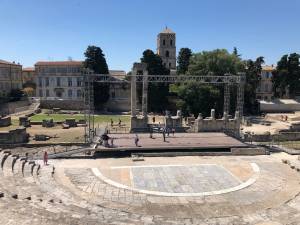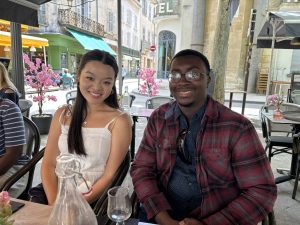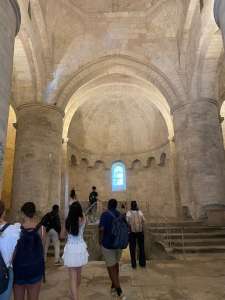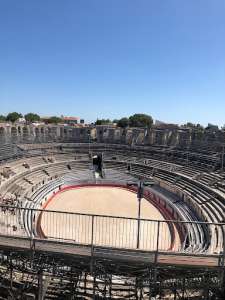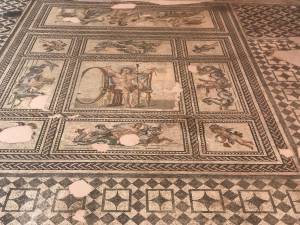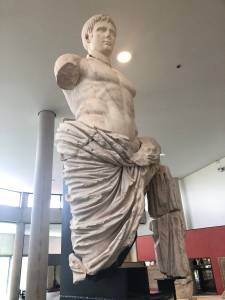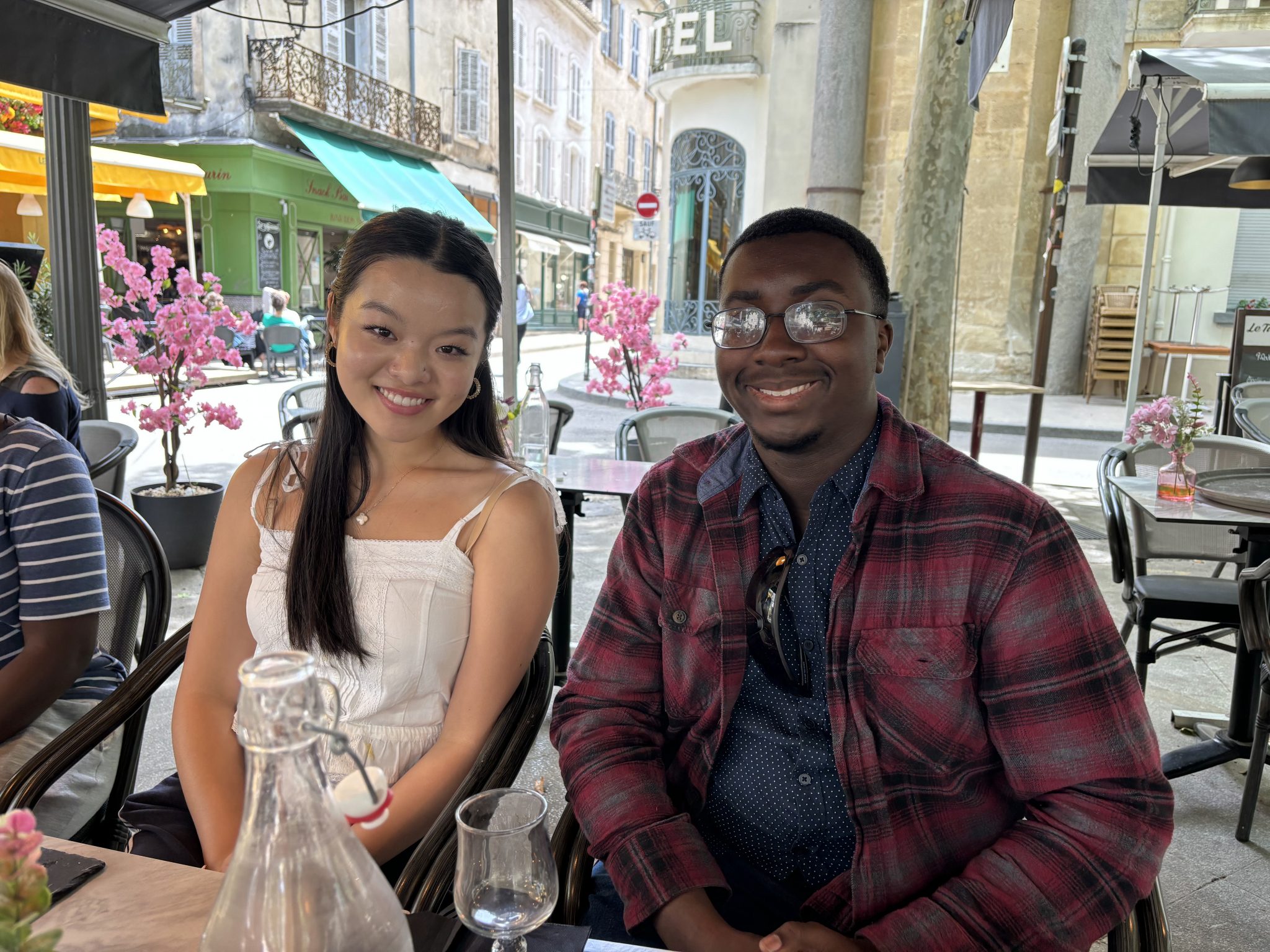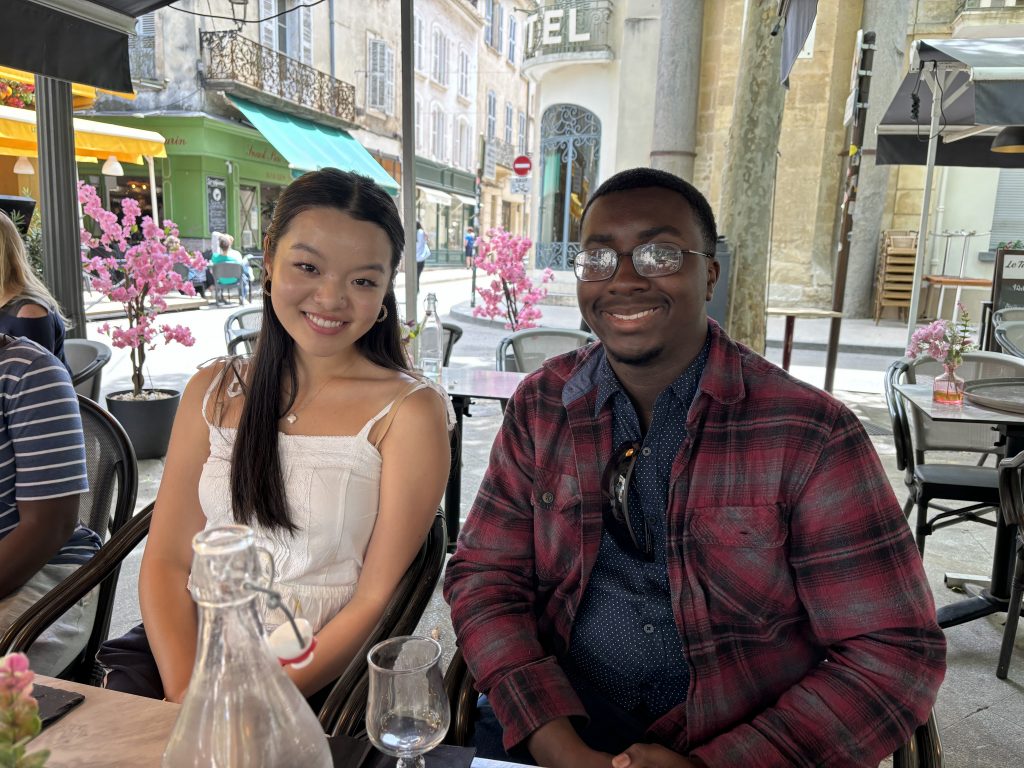Elisha ’25, gains “a new perspective on the past.”
For most people, imagining what life was like before their parents and grandparents can be quite laborious and honestly uninteresting. Their ancestors or predecessors past those two generations can feel so distant and old that it’s practically impossible to feel any real connection to the world of our past. With that said, imagine how difficult it is to have any connection, personal or not, with the past of people who lived, not decades, not centuries, but thousands of years ago. Try to think of how they lived, where they walked, what they played, how they talked, how they fought, and how they died. Could you put yourselves in the shoes of someone from as old a time as that; could you imagine that perspective? Prior to coming to Arles, I, probably like you, would’ve said that it’s almost impossible, especially living in a country as recent and new as the United States of America. But, coming to Arles and exploring its truly ancient history, I’ve been able to gain a new perspective on the past; I’ve been able to walk through time.
My walk through time in the South of France began on Tuesday, May 28th, when our Deerfield crew stopped for lunch in the “Place du Forum”. It was a relatively small, though busy, square, with tons of restaurants, cafes, and people. As we were walking to our seats, Katie Thornton, the director of Arles a la Carte who was also joining us for lunch, explained how the square was the last, still in use, part of the former Roman forum. Once a massive and well-engineered structure, it was reduced to just a façade and two columns on the surface, all of which were well over 2,000 years old. Below the surface were the well preserved and expansive Cryptoporticus. The Cryptoporticus were built to help even the terrain of the Forum building overhead to ensure the floor was nice and flat; it was also used for storage, religious practices, and more. Walking through the dark, cool, and expansive hallways of the Cryptoporticus, I realized that I was walking through the same halls, stepping over the same stones, and touching the same pillars that people thousands of years before me had.
In this way, I would time and again walk through time in Arles, discovering its deep and diverse Roman history and how that history continues to affect the city today. In the Museum of Antiquity, they had models of how different Roman structures and buildings looked and functioned in their times. Now of course, that doesn’t do much for creating that same historical perspective as actually being able to see and be in those very same structures and buildings. Luckily for me, the original versions of the models were literally just outside the window. The museum itself was built right at the very edge of what was formerly a great racing track from Roman times which once hosted spectacles of chariot racing and other activities. I could walk outside and stand right in the middle of the former track, which is now a beautiful garden/ park, and imagine what it was like for thousands of Roman spectators, watching the chariots whiz by, not too unlike the Kentucky derby.
It is hard to put yourself in someone’s shoes when they lived so long ago that shoes were more like sandals and were called Caligae. However, it’s a bit easier in places like Arles where history isn’t just trapped in books and pages; it’s all around you. All you have to do is step outside, and take a nice stroll, or walk, through time.
